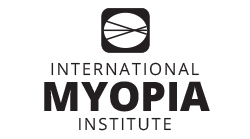
 This summary of an International Myopia Institute (IMI) white paper was created by and is used with permission from the Centre for Ocular Research & Education (CORE) at the University of Waterloo’s School of Optometry & Vision Science in Waterloo, Ontario, Canada. It originally appeared in the April 2019 issue of Contact Lens Update, CORE’s free access online resource.
This summary of an International Myopia Institute (IMI) white paper was created by and is used with permission from the Centre for Ocular Research & Education (CORE) at the University of Waterloo’s School of Optometry & Vision Science in Waterloo, Ontario, Canada. It originally appeared in the April 2019 issue of Contact Lens Update, CORE’s free access online resource.

Different treatment options are currently under investigation with the goal to delay the onset of myopia and slow down its progression. They are broadly categorized into optical, pharmacological, surgical and environmental (behavioral) interventions. Even though no single treatment has been shown to be 100% effective in all patients, different approaches have been investigated within each field, with most of them investigated over multiple years.
Optical interventions: Progressive addition (PALs) and bifocal spectacles reduce lag of accommodation, which is a potential source of hyperopic defocus, and they also lower accommodative demand, reducing tension in the ciliary muscles on the sclera. In comparison to single vision (SV) spectacles, treatment effects are typically 0.25D over a two year period, however one study using prismatic bifocal lenses reported 51% slower myopic progression compared to a SV spectacle group (-1.00 vs -2.00D) over a 3 year period, which was particularly effective for children with low lag of accomodation.1 Custom designed or commercially available multifocal (MF) soft contact lenses with centre distance designs are also frequently used, as they provide clear vision in the distance, while imposing myopic defocus on the peripheral retina to slow eye growth. On average, studies showed a 38% slowing in myopia progression and a 38% slowing in axial elongation with MF soft contact lens wear compared to SV spectacles or contact lenses. Orthokeratology (OK) lens wear has been shown to induce relative myopic shifts in peripheral refractive errors in all meridians. Two recent meta-analyses confirmed the effectiveness of OK for myopia control,2,3 with studies showing a reduction in axial elongation ranging from 30% to 63% compared to SV spectacles.
Pharmacological interventions: Atropine is a nonselective antimuscarinic antagonist, and is used in concentrations of 0.01 to 1% in myopia studies. To date, the exact mechanism of action of atropine on myopia progression remains unclear. In the first treatment year, progression of myopia is typically slower with higher atropine concentration compared to lower concentrations, however dose-dependent differences may not be as apparent in the second year of treatment. Other pharmaceuticals such as pirenzepine, 7-methylxanthine and timolol are also currently under investigation, with some studies showing promising outcomes.
Surgical interventions: Greater than normal axial length growth may be the result of reduced collagen synthesis and increased collagen degradation, which causes thinning of the sclera. Posterior scleral reinforcement (PSR), injection based scleral strengthening and collagen cross-linking scleral strengthening are surgical interventions designed to stabilize the sclera to control further myopia progression. PSR has been somewhat effective and even though the surgery is considered difficult, complications are generally minor.
Environmental (behavioural) factors: A recent meta-analysis found that every additional 1 hour of outdoor time per week is associated with a reduction in risk of developing myopia by 2%.4 Whether or not outdoor time is protective against myopia progression is less clear, as studies have found equivocal results. To mimic outdoor conditions, studies are currently investigating different indoor light sources and light levels as well as the intake of vitamin D, however to-date no general conclusions can be made on their effectiveness.
What we know and what we don’t know: Details on the rebound effect after stopping treatment are not always available. For atropine, a 2-year treatment study reviewed myopic progression one year after the treatment was stopped and reported an increase of >0.5D in 68% and 59% of children treated with 0.5% and 0.1% atropine respectively, compared to 24% of children treated with 0.01% atropine.5 Age is also a factor here, with older children (12-14 years of age) experiencing less rebound compared to younger children.5 Early termination of OK treatment has also shown to lead to a greater increase in axial elongation in children,6 however this effect has not been found in young adults with adult-onset of myopia.7
Gaps in the understanding of the mechanism of the interventions are acknowledged. Future studies are expected to focus on combination therapies in order to combine the positive effects from different treatment options.
REFERENCES
- Cheng D, Woo GC, Drobe B, et al. Effect of bifocal and prismatic bifocal spectacles on myopia progression in children: three-year results of a randomized clinical trial. JAMA Ophthalmol 2014;132:258-64.
- Si JK, Tang K, Bi HS, et al. Orthokeratology for myopia control: a meta-analysis. Optom Vis Sci 2015;92:252-7.
- Sun Y, Xu F, Zhang T, et al. Orthokeratology to control myopia progression: a meta-analysis. PLoS One 2015;10:e0124535.
- Sherwin JC, Reacher MH, Keogh RH, et al. The association between time spent outdoors and myopia in children and adolescents: a systematic review and meta-analysis. Ophthalmology 2012;119:2141-51.
- Chia A, Lu QS, Tan D. Five-Year Clinical Trial on Atropine for the Treatment of Myopia 2: Myopia Control with Atropine 0.01% Eyedrops. Ophthalmology 2016;123:391-9.
- Cho P, Cheung SW. Discontinuation of orthokeratology on eyeball elongation (DOEE). Cont Lens Anterior Eye 2017;40:82-7.
- Gonzalez-Meijome JM, Carracedo G, Lopes-Ferreira D, et al. Stabilization in early adult-onset myopia with corneal refractive therapy. Cont Lens Anterior Eye 2016;39:72-7.
Other CORE summaries of IMI White Papers
All the International Myopia Institute White Papers
CORE’s Contact Lens Update, a free online resource











